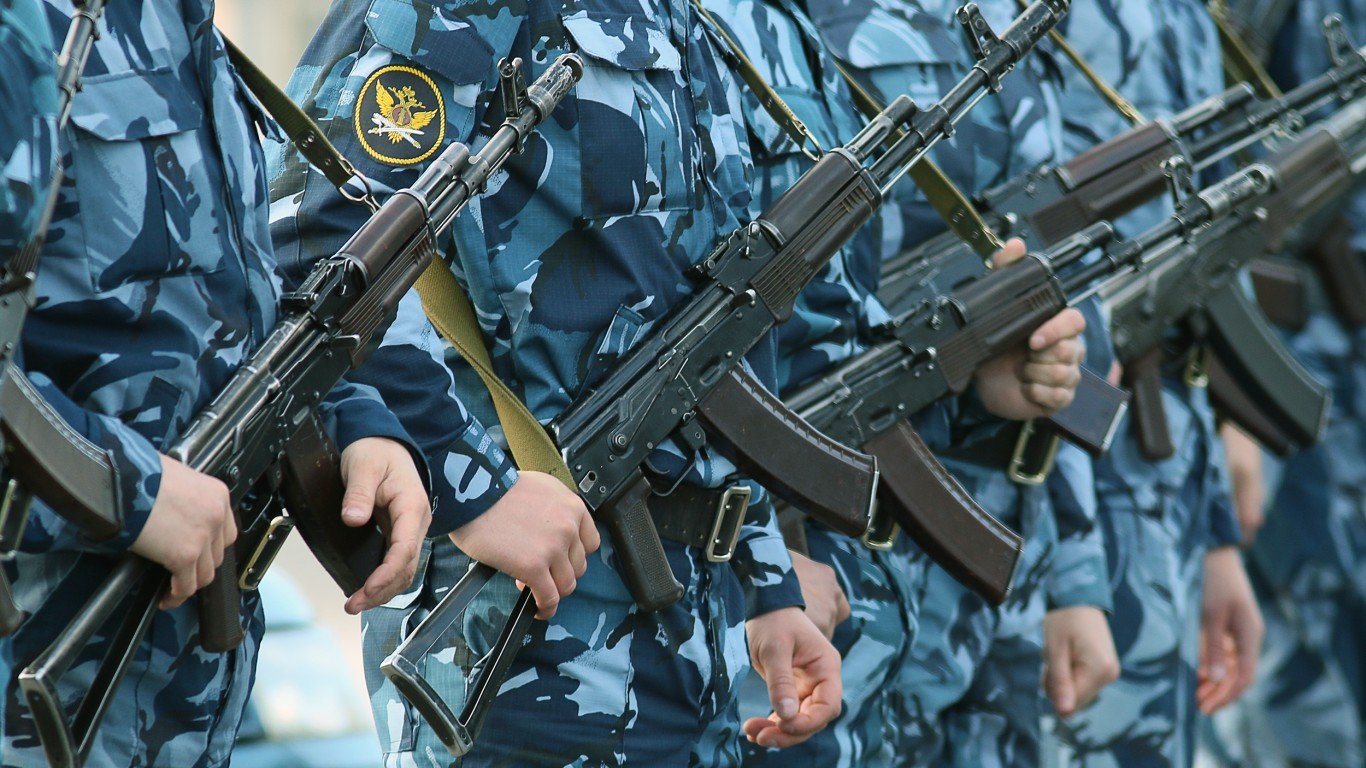

Russian President Vladimir Putin continues to threaten to use nuclear weapons as retaliation for any attack from the West. For many, this threat brings back some of the constant state of fear that was commonplace during the Cold War. At the peak of the conflict between the two global powers, there were some 65,000 nuclear weapons armed and ready to fly at a moment’s notice. (These are the countries that control the world’s nuclear weapons.)
During this era of heightened tensions, the average American may not realize exactly how, on more than two dozen occasions, the U.S. and Russia came frighteningly close to launching those weapons with the destructive power capable of ending life on earth as we know it.
To find nuclear close calls that nearly caused World War III, 24/7 Wall St. reviewed several articles and research papers, including from Union of Concerned Scientists, Nuclear Files, History.com, Future of Life Institute, and History Hit. Incidents are listed in chronological order. There were numerous incidents during the Cuban Missile Crisis in October 1962. We have only listed a few incidents – in general and from the crisis. The Soviets no doubt also had close calls, and only a few are known.
The vast majority of these near misses came during the heightened tensions of the Cold War, especially between the 1960s and 1980s. These incidents were often simply the result of a mistake – whether a mechanical problem causing issues, a communication breakdown between nuclear nations, or just a simple misunderstanding. Other close calls, however, were the result of deliberate actions taken by one country or another that in some way provoked or worried its adversary.
Many nuclear non-proliferation organizations have worked to try to convince nations with nuclear arsenals to ratchet down the threat of nuclear war and to try to convince other nations from developing such weapons of their own. The consequences of the only two nuclear weapons ever used, by the U.S. on Japan in the 1940s, were devastating. Nuclear weapons have only gotten more powerful since, and the use of these weapons would be catastrophic. This is what a nuclear war would do to the world.
Click here to see nuclear mixups that almost started World War III

Swans confused for MIGs, other false alarms during Suez Crisis
> Date: Nov. 5, 1956
The Suez Crisis was a 1956 conflict in which British, French, and Israeli forces attacked Egypt to try to stop the country’s attempts to nationalize the Suez Canal. The USSR threatened to attack England and France in retaliation, heightening tensions worldwide.
Following the threats, the U.S. saw an alarming uptick in military activity. There were dozens of unidentified objects flying over Turkey, Soviet MiG fighter planes flew over Syria, and a Soviet fleet was on the move within Turkey. The U.S. was concerned this would trigger a nuclear strike from NATO, but it turned out the fighter planes were a routine escort for a politician, the movement in Turkey was a training exercise, and the “unidentified objects” were just swans.
[in-text-ad]

Radar confuses a moon rise for a missile attack
> Date: Oct. 5, 1960
The North American Aerospace Defense Command, known as NORAD, is a joint American-Canadian organization that monitors the skies for missiles and other potential attacks.
On Oct. 5, 1960, an alert from Greenland sent to NORAD appeared to show multiple Soviet missiles heading right towards the U.S. Military leaders were surprised to hear this, as Soviet leader Nikita Khrushchev was in the U.S. at the time. Upon closer inspection, the radar had actually detected the moon rising over Norway.
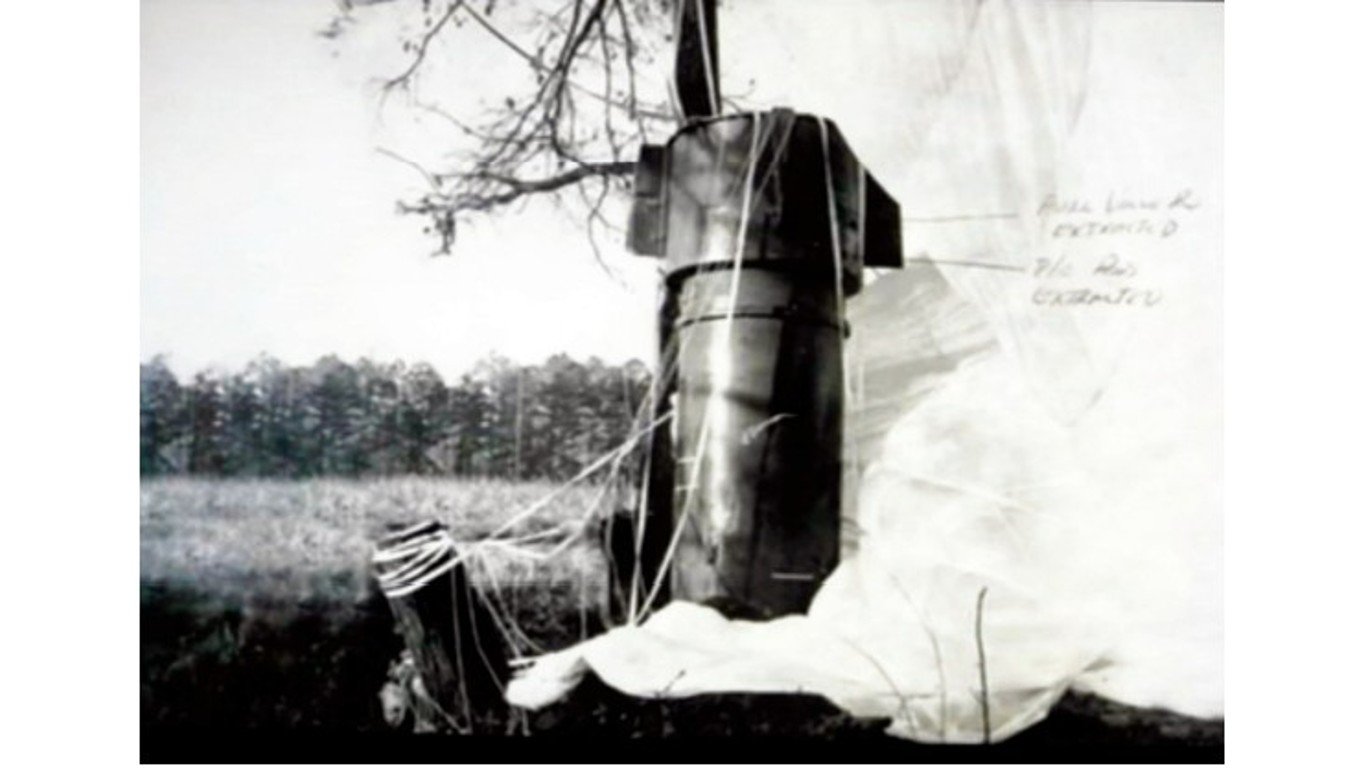
H-bombs dropped on North Carolina when a B-52 crashes
> Date: Jan. 24, 1961
Not all of these close calls involved tensions between nuclear-armed nations. Over 50 years ago, an accident nearly caused a nuclear catastrophe. In early 1961, a bomber was flying over North Carolina when it lost a wing and dropped two nuclear bombs onto the town of Goldsboro.
One of the bombs’ parachutes failed and it broke apart when it crashed to the ground, and five of the six safety devices in the other bomb failed, it was discovered upon inspection. After the incident, Defense Secretary Robert McNamara said that America only avoided a disaster “by the slightest margin of chance.”
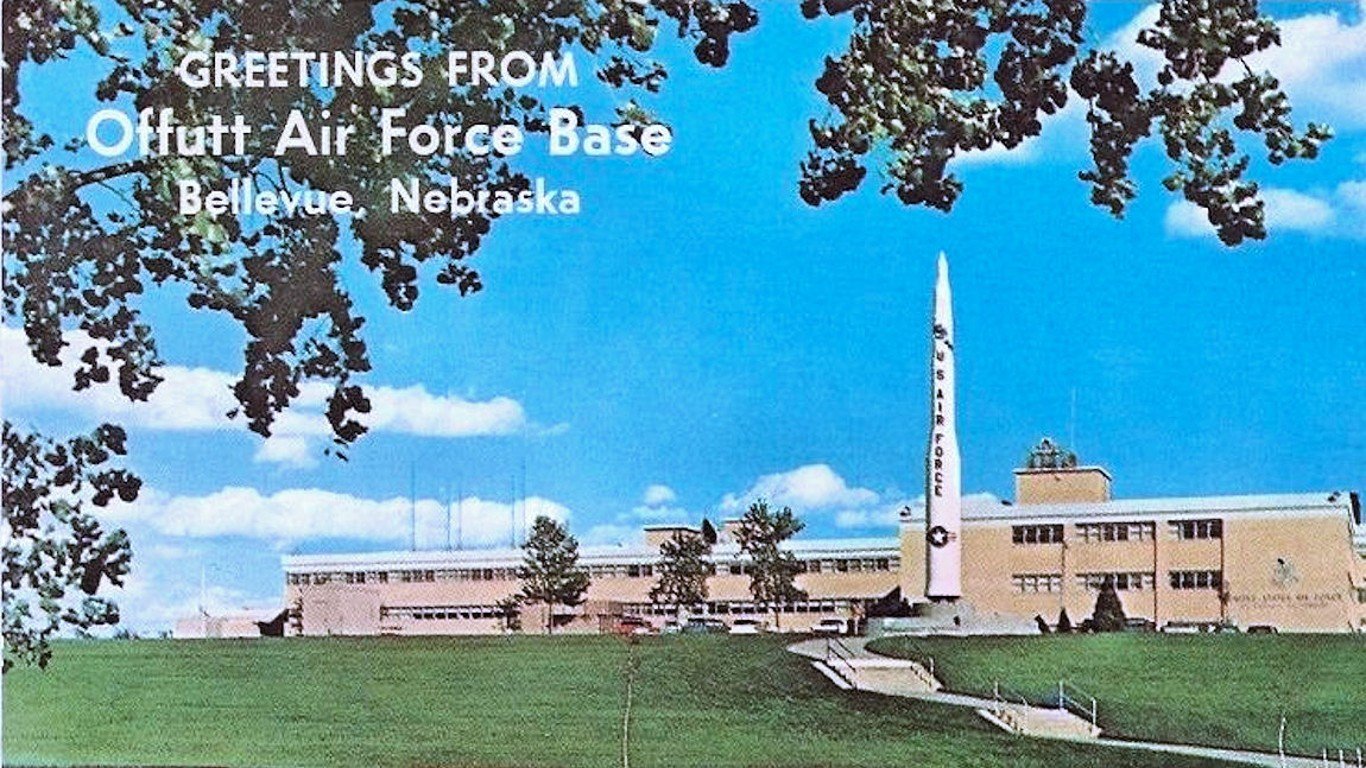
Communication failure with sites causes alarm
> Date: Nov. 24, 1961
In November 1961, U.S. Strategic Air Command headquarters lost its connection with NORAD and three different missile warning systems. The systems were supposedly independent, so those at SAC headquarters feared the three communications breakdowns indicated there was an attack on America’s defenses.
Fortunately, a B-52 bomber was passing over one of the missile warning sites and relayed to SAC that all seemed normal. It was later discovered that all the communications lines traveled through one relay station, which had simply overheated.
[in-text-ad-2]
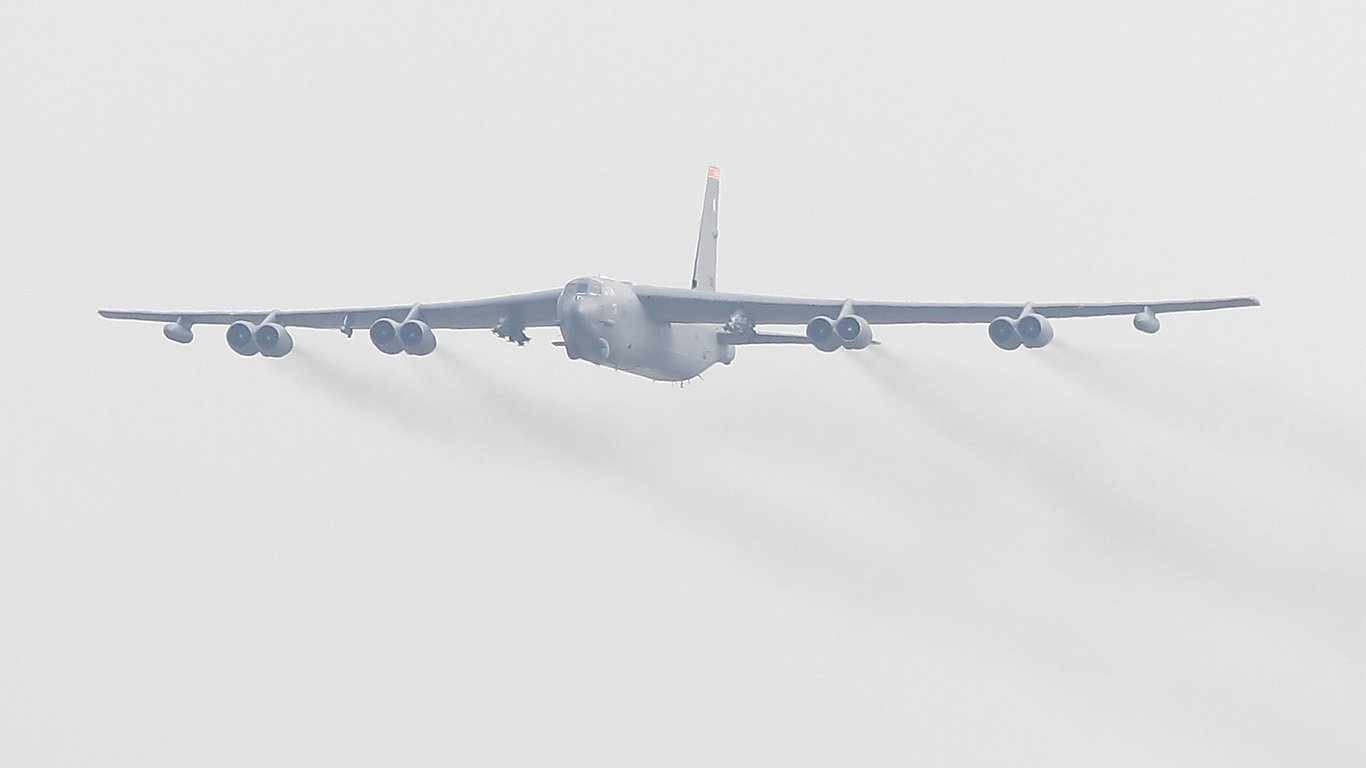
B-52 navigation error
> Date: Aug. 23, 1962
Just before the Cuban Missile Crisis in 1962, the U.S. accidentally raised tensions within the Soviet Union. Due to a navigational error, a nuclear-armed B-52 began flying a route over Alaska and right into Soviet airspace. The error was eventually noticed and corrected, but this route was used consistently for months.

Cuban Missile Crisis: Soviet satellite explodes
> Date: Oct. 24, 1962
The Cuban Missile Crisis was a two-week stretch in October 1962 in which the U.S. and Soviet Union entered a tense standoff after the U.S. discovered Soviet missiles were being assembled in Cuba. Following the discovery, several incidents nearly plunged the world into nuclear war.
Amid the crisis, the Soviet Union attempted to launch a satellite, but it exploded just after entering orbit. The blast made the U.S. believe the Soviets were launching ballistic missiles. We may never know how close the U.S. came to retaliating, as the details of the events are still classified.
[in-text-ad]
Cuban Missile Crisis: Volk Field bear incident
> Date: Oct. 25, 1962
During the heightened tensions of the Cuban Missile Crisis, a routine mishap nearly triggered a nuclear war. When a guard in a Duluth, Minnesota, base spotted a supposed intruder trying to climb the fence, he activated an alarm that was supposed to alert all area bases.
However, one of the alarms in Wisconsin was miswired and instead of alerting the troops at the base, sent out a signal for nuclear armed F-106A interceptors to take to the skies. Fortunately, the pilots got in touch with the Duluth base before any damage was done and learned that the supposed intruder was just a bear trying to climb the fence.
Cuban Missile Crisis: U2 spy plane shot down over Cuba
> Date: Oct. 27, 1962
Perhaps one of the closest calls during the Cuban Missile Crisis came on Oct. 27, when an American U2 spy plane was shot down by Soviet troops over Cuba. U.S. military leaders had previously decided that any such actions would be a deliberate escalation, and that it should be met with an attack.
Despite this previous decision, U.S. leaders decided against a strike. As it turned out, the Soviet command was also ordered not to shoot down any American planes, yet one junior commander reportedly acted under his own authority when he ordered the U2 shot down.
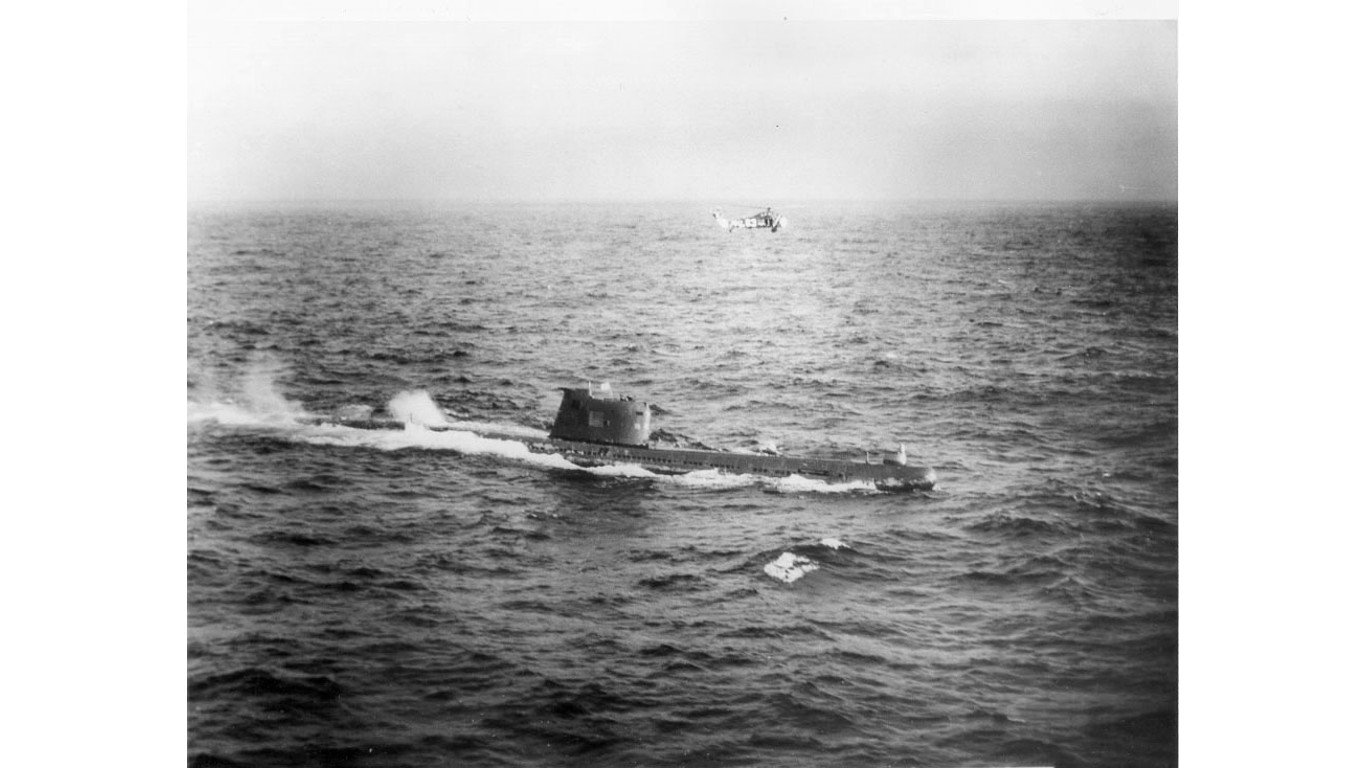
Cuban Missile Crisis: Submarine incident
> Date: Oct. 27, 1962
During the Oct. 27 submarine incident, nuclear war was averted by just one man. The Soviet submarine B-59 was cornered by U.S. ships in international waters near Cuba. The sub was overheating and had lost communications with Moscow when the U.S. started dropping depth charges that were meant to force the sub to surface and leave. The Americans told the Soviets they did not intend to sink the sub, but due to a communications failure, those aboard the sub had no idea.
The B-59 was armed with a nuclear weapon, and its commanders had the authority to launch it without prior authorization from Moscow – they just needed all three officers aboard to agree it was the right call. After being bombarded, two officers wanted to launch the nuclear missile but the third, Vasili Arkhipov, refused to give the order, avoiding nuclear war.
[in-text-ad-2]
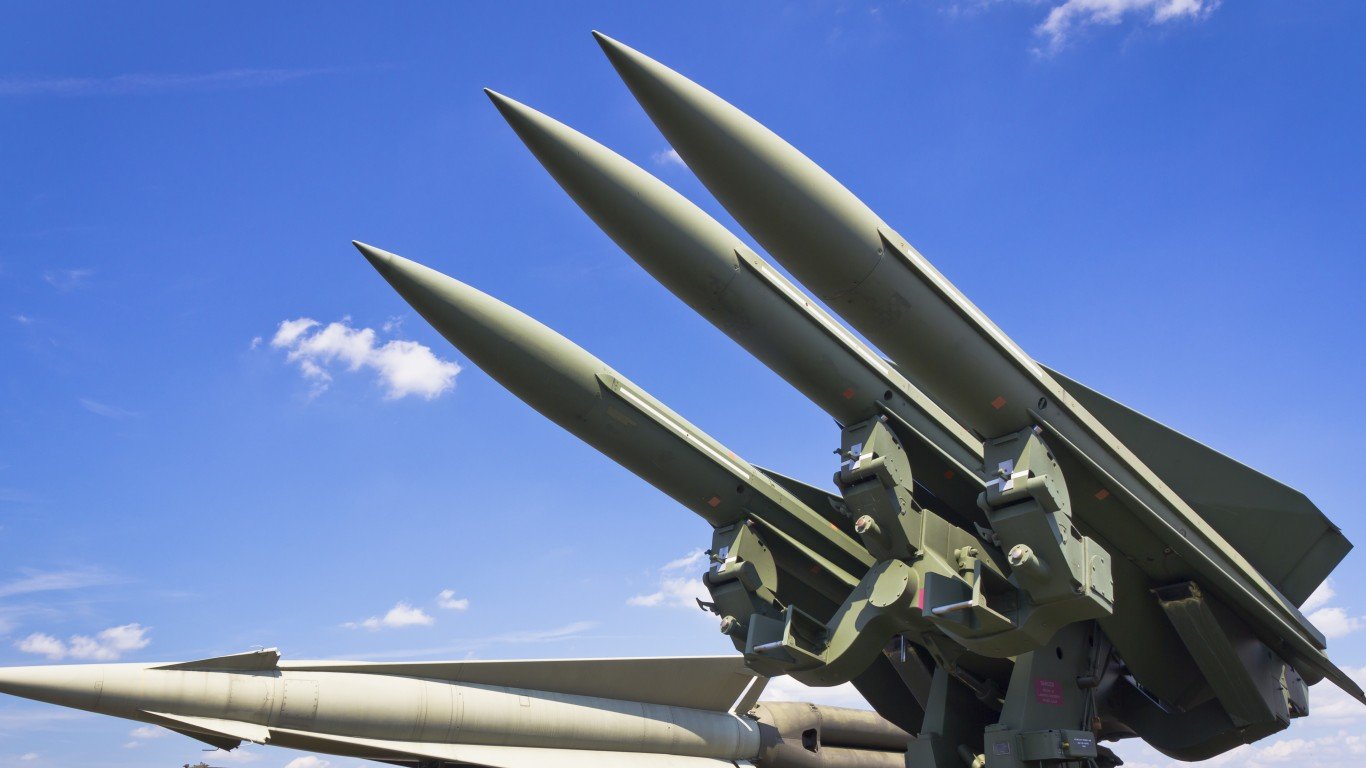
Cuban Missile Crisis: False waring of missiles over Georgia
> Date: Oct. 28, 1962
The newly-established Laredo missile warning site said it identified two missiles over Georgia in 1962, sending U.S. forces into action. NORAD thought the call came from the more established Moorestown site, but the mistake was not corrected by Moorestown. Laredo operators eventually realized they misidentified a satellite and made the mistake known before any retaliation could take place.
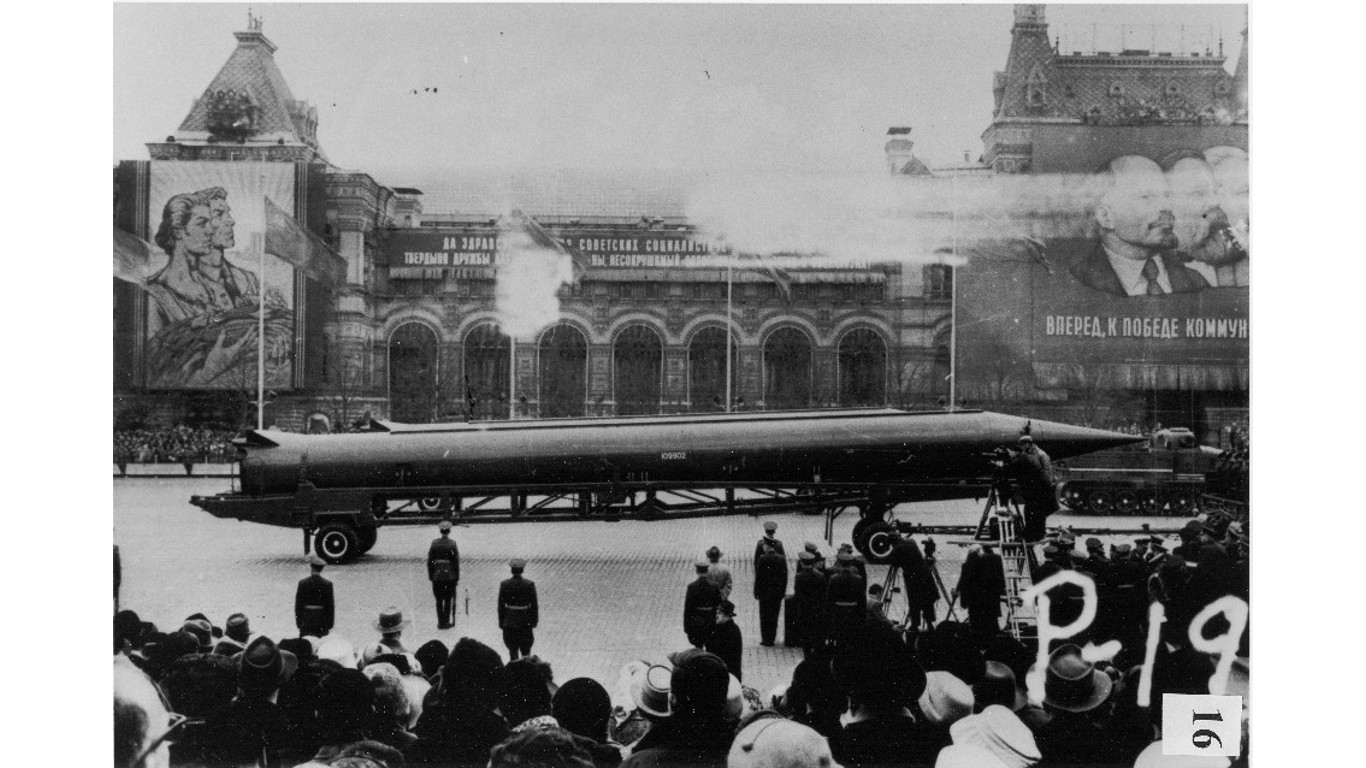
Cuban Missile Crisis: Another false missiles alarm
> Date: Oct. 28, 1962
Mistakes by early warning system operators were surprisingly common during the Cuban Missile Crisis. The Moorestown, New Jersey, station reported that missiles were set to hit Tampa, Florida, around 9:00 a.m. on Oct. 28, 1962. This was the result of a test simulation and a satellite launch happening simultaneously, neither of which Moorestown was ever told about.
[in-text-ad]
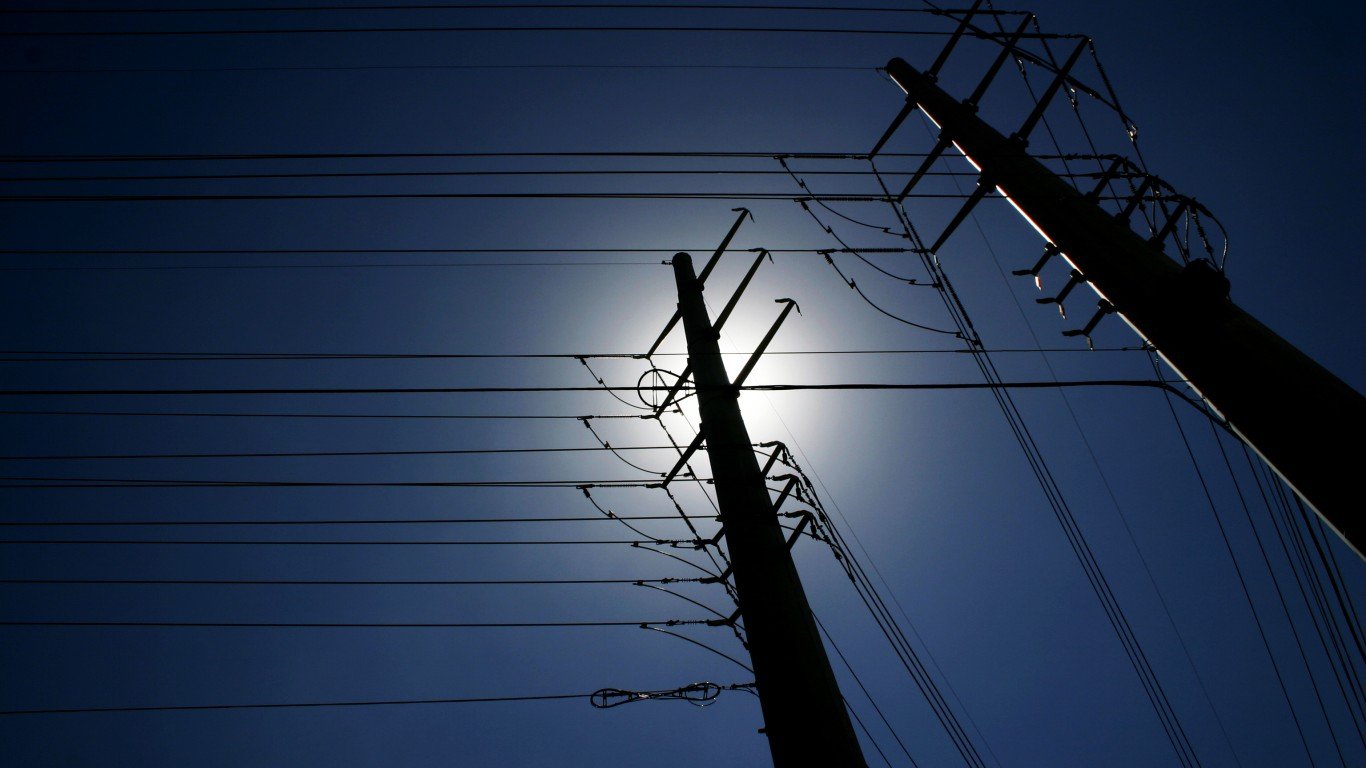
Power failure mistaken for nuclear blasts
> Date: Nov. 9, 1965
Following the Cuban Missile Crisis, tensions and near-misses persisted between the U.S. and the Soviet Union. In November 1965, a power failure hit the northeastern U.S. Many major cities and military bases had nuclear bomb alarms. They should have turned from green (all clear) to yellow, which indicates a fault in the system or power outage. Instead, they turned red, which signaled a nuclear attack. Military leaders realized this was more likely a mechanical issue than a genuine attack.
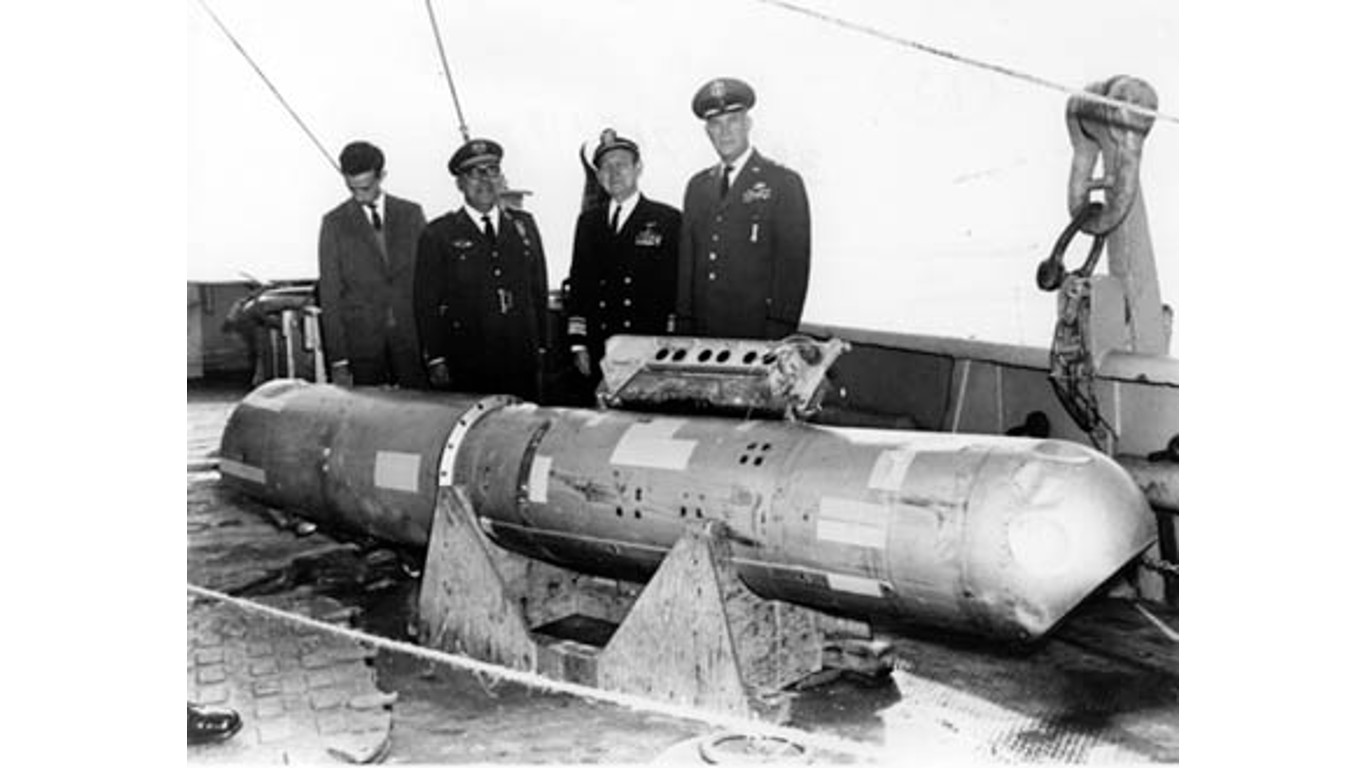
Palomares B-52 crash
> Date: Jan. 17, 1966
Palomares in southeastern Spain is still feeling the effects of a B-52 crash that took place there over 50 years ago. The B-52 bomber crashed into the plane that was refueling it midair. Two of its four nuclear weapons partially detonated. Though it did not result in a full-scale nuclear blast, it did scatter radiation over the region. Many local residents and the American cleanup crew have since come down with radiation-related illnesses, and parts of the area remain radioactive.

Confusing solar flares with nuclear attacks
> Date: May 23, 1967
The relatively new missile warning systems introduced during the Cold War were often thrown off or confused by mechanical error or natural phenomena. A May 1967 solar flare knocked many of these systems offline, initially causing concern the Soviets were responsible and were about to stage an attack. Nuclear bombers were set to take off in response before scientists discovered the solar flare caused the outage.
[in-text-ad-2]
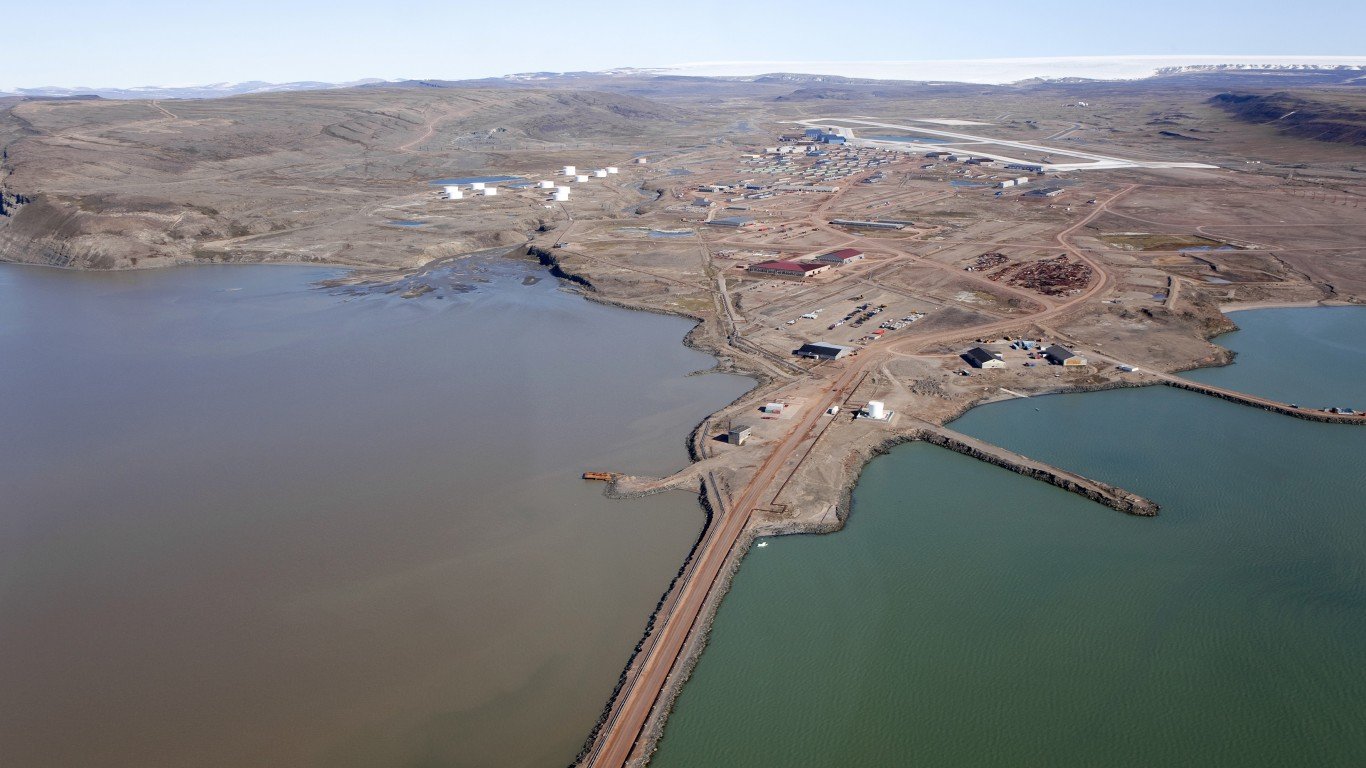
Fire on B-52 causes H-bomb to shatter in Greenland
> Date: Jan. 21, 1968
An American B-52 bomber caught on fire in January of 1968, causing the crew to abandon the plane near Thule, Greenland. All four hydrogen bombs aboard the plane partially detonated, releasing radioactive material into the ocean. If not for flaws in the designs of those bombs, they easily could have detonated fully.

False alarm during Middle East Crisis
> Date: Oct. 24, 1973
As the Cold War dragged on into the 1970s, the Middle East conflict between Israel and nearby Arab nations also partially served as a proxy war between the U.S. and the Soviet Union – the Americans backed Israel, while the Soviets threatened to help Egypt’s military.
During the Arab-Israeli War, the U.S. put its military on high alert as a way of making sure the Soviets did not intervene. While at DEFCON 3, a worker at a Michigan airbase inadvertently activated its emergency alarm system. Bombers were readied for take off, but the officer in charge realized the mistake and canceled the alarm. (DEFCON stands for defense readiness condition, with DEFCON 1 indicating a nuclear war is imminent and DEFCON 5 indicates the lowest level of readiness. There have been few known instances of DEFCON 3 and only two known instances of DEFCON 2.)
[in-text-ad]

Presidential depression
> Date: Aug. 1, 1974
In the summer of 1974, Richard Nixon’s presidency was falling apart due to the Watergate scandal. Before he became the first president to resign on Aug. 9, 1974, he was reportedly emotionally unstable and frequently drunk in the White House – not an ideal temperament for the man with the nuclear football (the briefcase used by U.S. presidents to authorize a nuclear attack). Before Nixon resigned, Secretary of Defense James Schlesinger made sure that any order of a nuclear strike from Nixon went through him first.
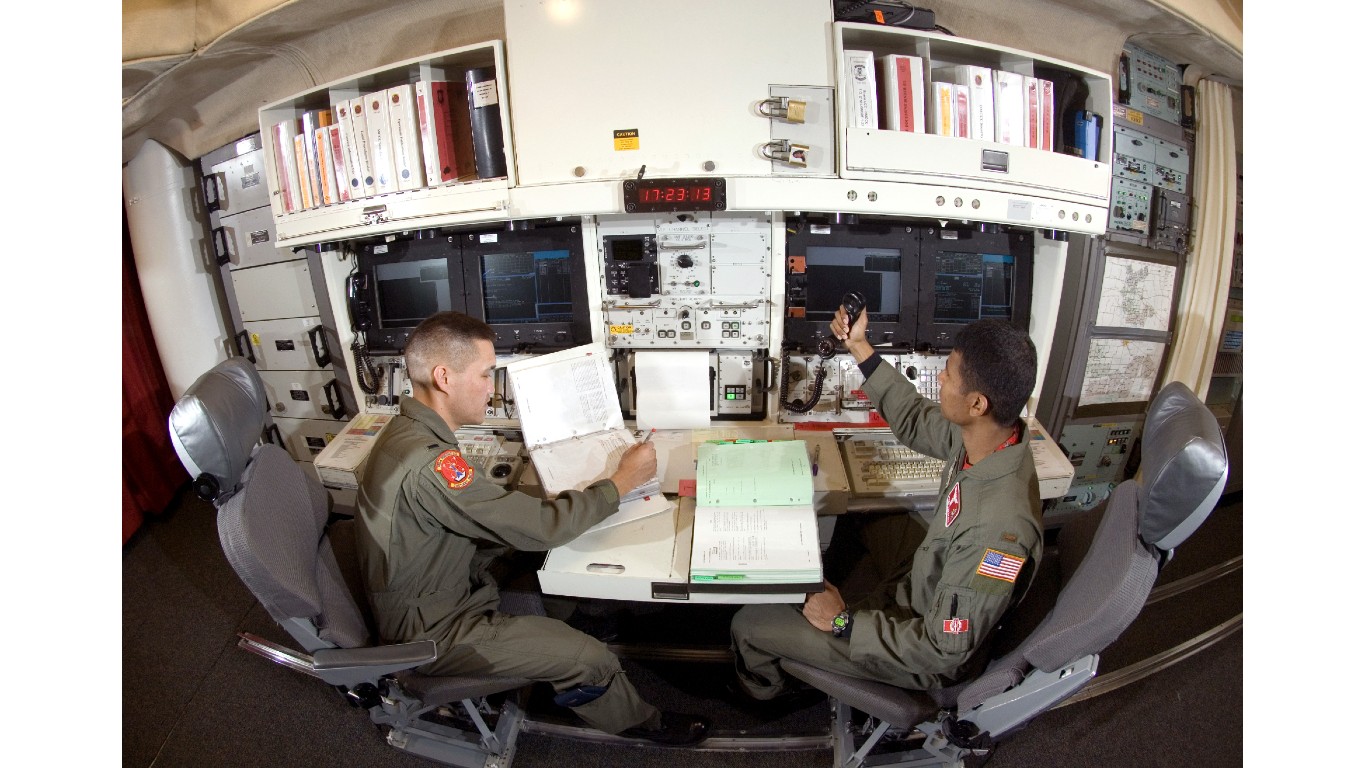
Simulated Soviet attack on tape mistaken for real
> Date: Nov. 9, 1979
On Nov. 9, 1979, NORAD picked up data indicating a full-scale Soviet nuclear attack. Missile crews and bomber pilots were readied for retalliation, but satellite scans showed no signs of any nuclear warheads. It was eventually discovered that a technician played a training video in an active computer, simulating a large attack.
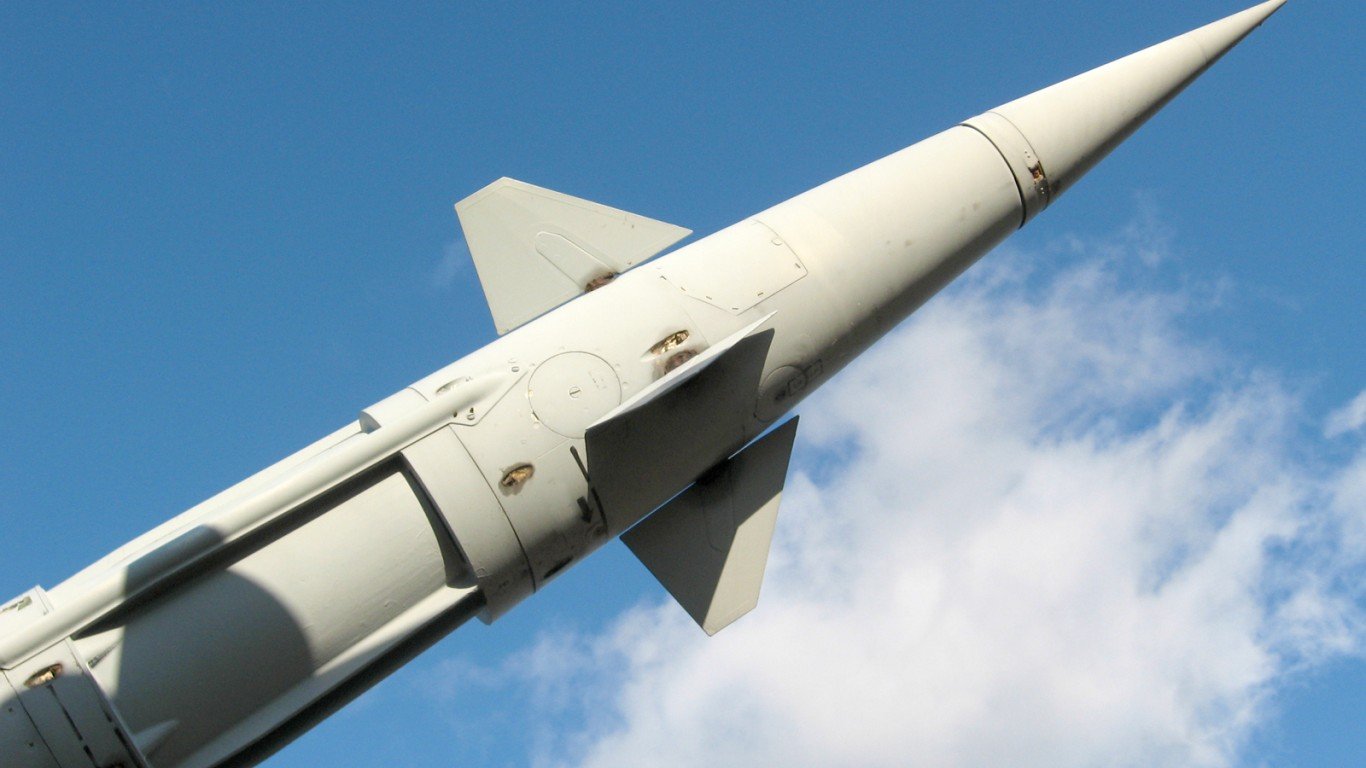
Mistaken trajectory of Soviet missiles
> Date: Mar. 15, 1980
Training exercises are important to keep military units sharp, but they were often mistaken as an actual act of aggression during the Cold War. A 1980 missile test as part of some routine training for Soviet troops caused alarm for U.S. military leaders, as an early warning sensor detected that one of the missiles was heading for the U.S.
[in-text-ad-2]

Faulty chip signals Soviet attack
> Date: June 3, 1980 – June 6, 1980
Even the most important electronics are found to be faulty at times. In June of 1980, chip malfunctions nearly caused nuclear war. Military command centers saw warnings about missiles coming at the U.S. They prepared for retaliation, but the number of missiles kept changing, so they figured it was an error. The same thing happened again three days later, and bombers were again prepared, but technicians eventually found out faulty computer chips caused the mistake.
Soviet Union radar confuses sun reflections for incoming missiles
> Date: Sep. 26, 1983
Both the Americans and Soviets nearly instigated a nuclear war because their missile warning systems mistook the sun for an attack. Soviet satellites indicated five Americans missiles were headed their way, but a Soviet commander figured the U.S. would not only fire five missiles. It turned out the reflection of the sun on clouds had fooled the satellites.
[in-text-ad]
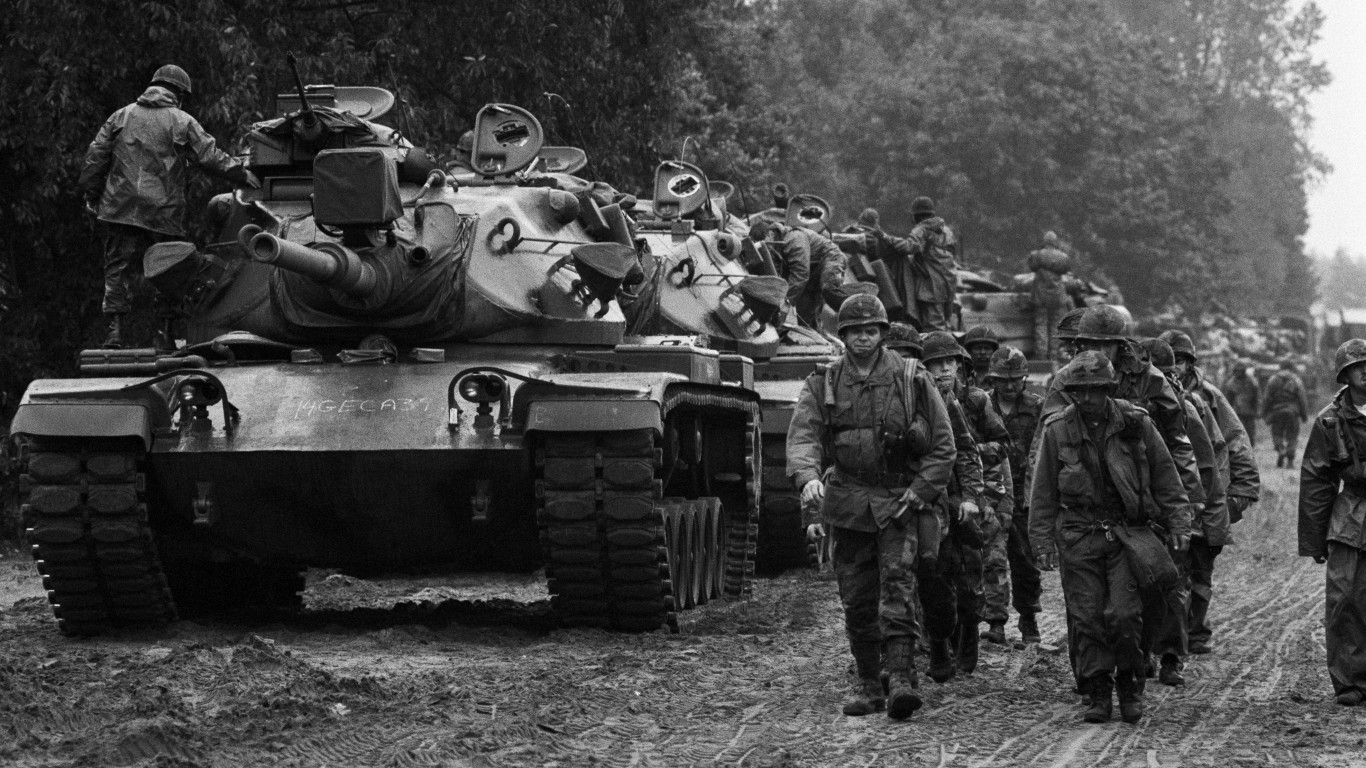
Soviets misinterpret NATO nuclear war games
> Date: Nov. 2, 1983 – November 11, 1983
Much like when the U.S. thought a 1980 Soviet training exercise was an actual attack, the Soviets made the same mistake just three years later. A NATO training exercise in 1983 was meant to simulate DEFCON 1 – the highest alert level – and a full scale nuclear attack on the Soviet Union.
This exercise debuted new forms of communication and involved high-ranking government officials, sending the Soviets into high alert as well. Their missiles were prepared for launch, but Soviet leaders never gave the final order.
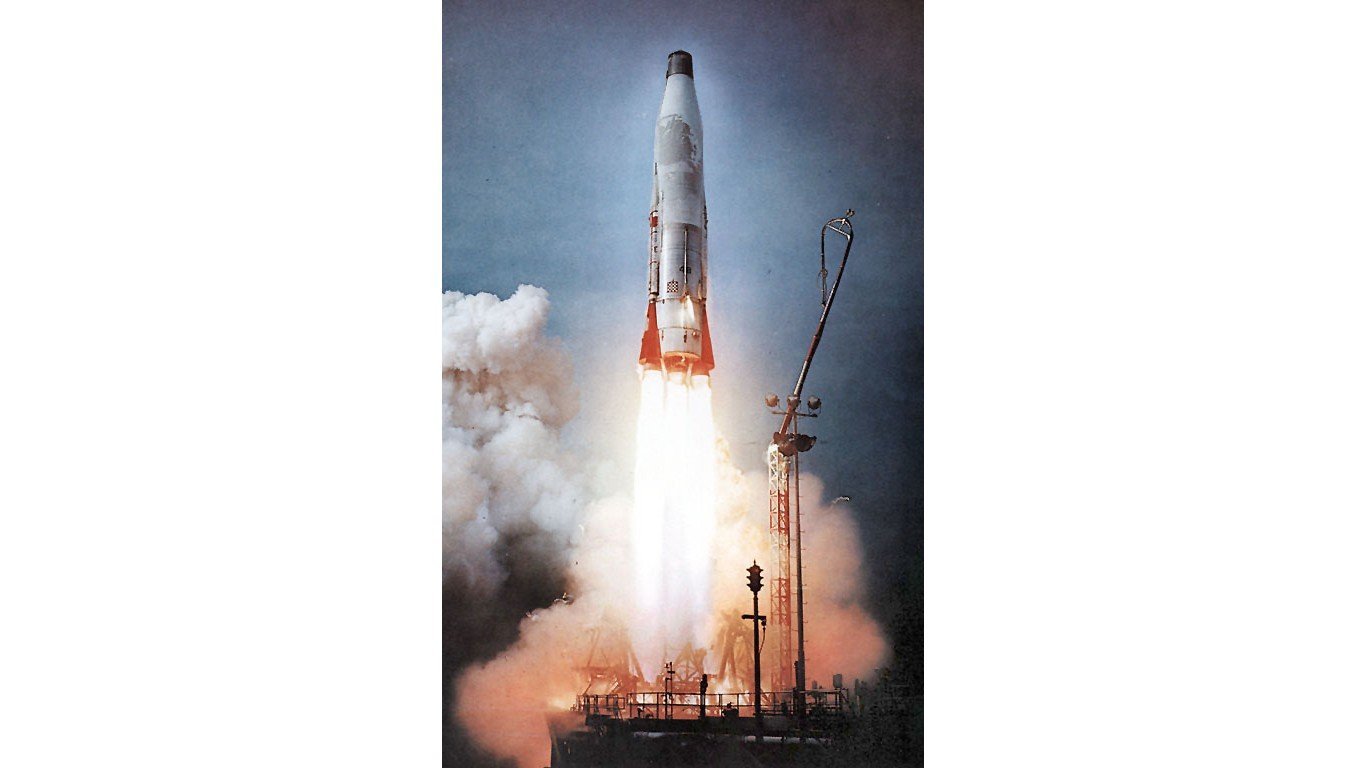
Norwegian rocket mistaken for ballistic missile
> Date: Jan. 25, 1995
After the Soviet Union fell, tensions remained high between Russia and the U.S. In 1995, Russia detected a missile launch, and Russian President Boris Yeltsin prepared to fire back. It was eventually realized that the missile was just a Norwegian rocket that was launched to study the aurora borealis.
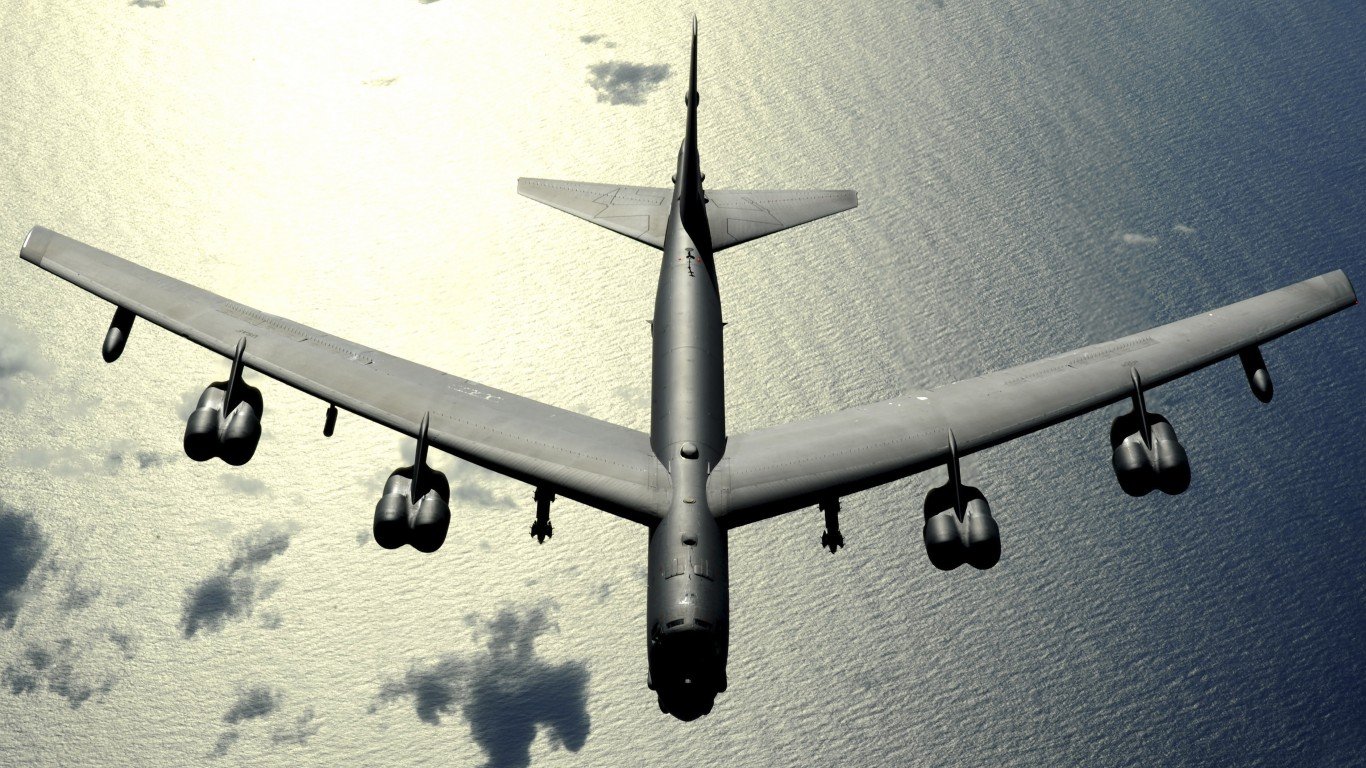
Six misrouted live nukes
> Date: Aug. 29, 2007 – Aug. 30, 2007
Even as tensions between the U.S. and Russia were relatively calm in more recent years, lapses in nuclear security could still cause a near-miss from catastrophe. In 2007, live armed nuclear weapons were mistakenly loaded onto a B-52 bomber. The plane and the weapons were left unguarded overnight on the tarmac at a North Dakota base, then flown to Louisiana, where they were again left unattended. Though no disaster resulted, the situation highlighted multiple lapses in protocol and errors in oversight.
[in-text-ad-2]

Lost contact with 50 missiles
> Date: Oct. 23, 2010
The most recent known nuclear mishap came in 2010, when Warren Air Force Base in Wyoming lost contact with 50 ICBMs (intercontinental ballistic missiles). Though the base had eyes on the missiles, they lost control and functionality of the nuclear-capable missiles for nearly an hour – an unprecedented lapse.
Take This Retirement Quiz To Get Matched With A Financial Advisor (Sponsored)
Take the quiz below to get matched with a financial advisor today.
Each advisor has been vetted by SmartAsset and is held to a fiduciary standard to act in your best interests.
Here’s how it works:
1. Answer SmartAsset advisor match quiz
2. Review your pre-screened matches at your leisure. Check out the
advisors’ profiles.
3. Speak with advisors at no cost to you. Have an introductory call on the phone or introduction in person and choose whom to work with in the future
Take the retirement quiz right here.
Thank you for reading! Have some feedback for us?
Contact the 24/7 Wall St. editorial team.
 24/7 Wall St.
24/7 Wall St.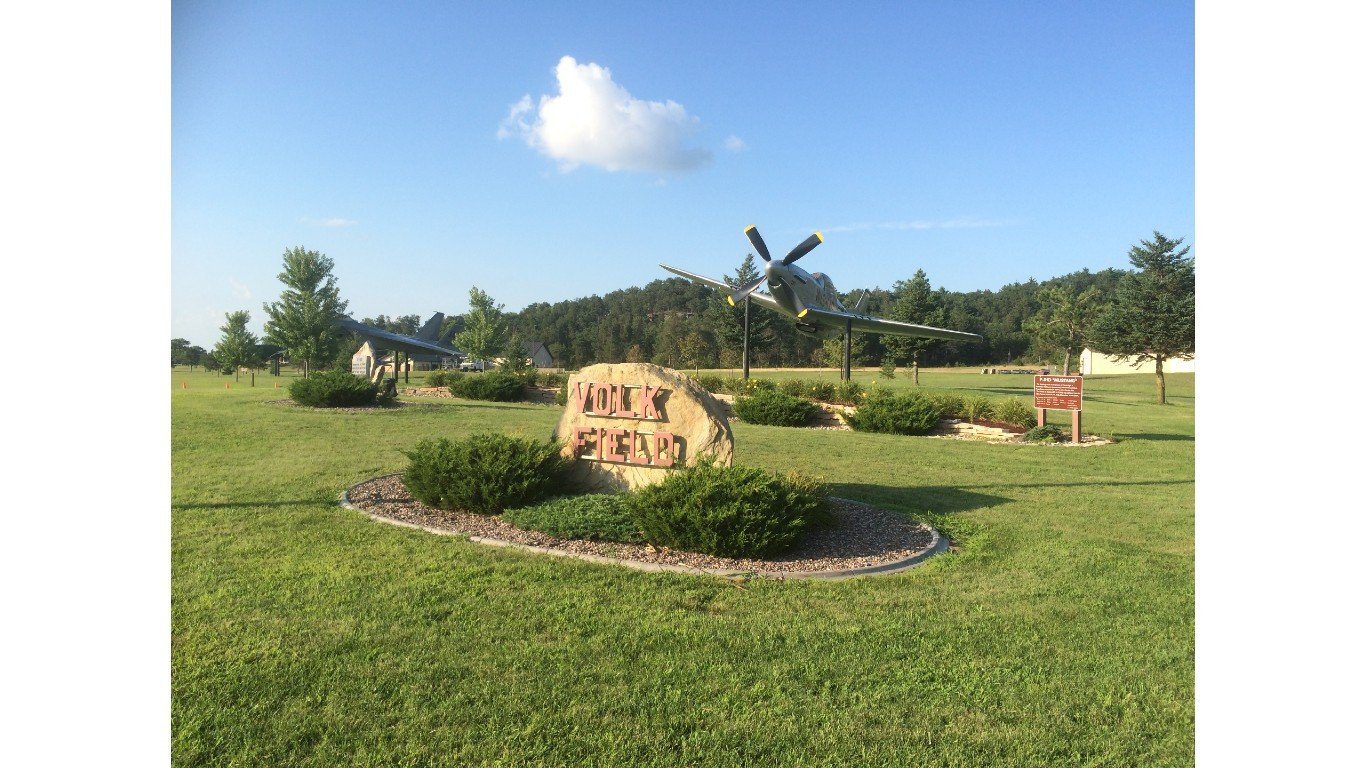
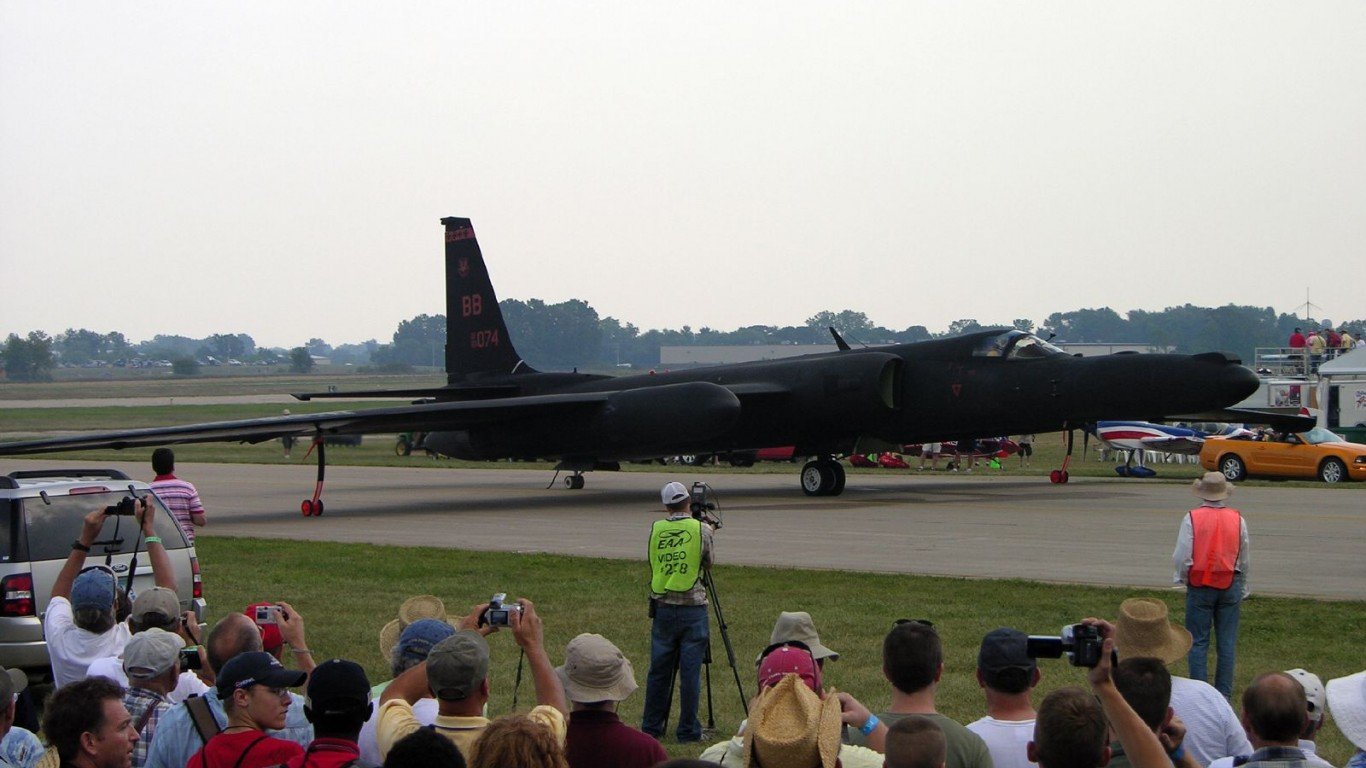
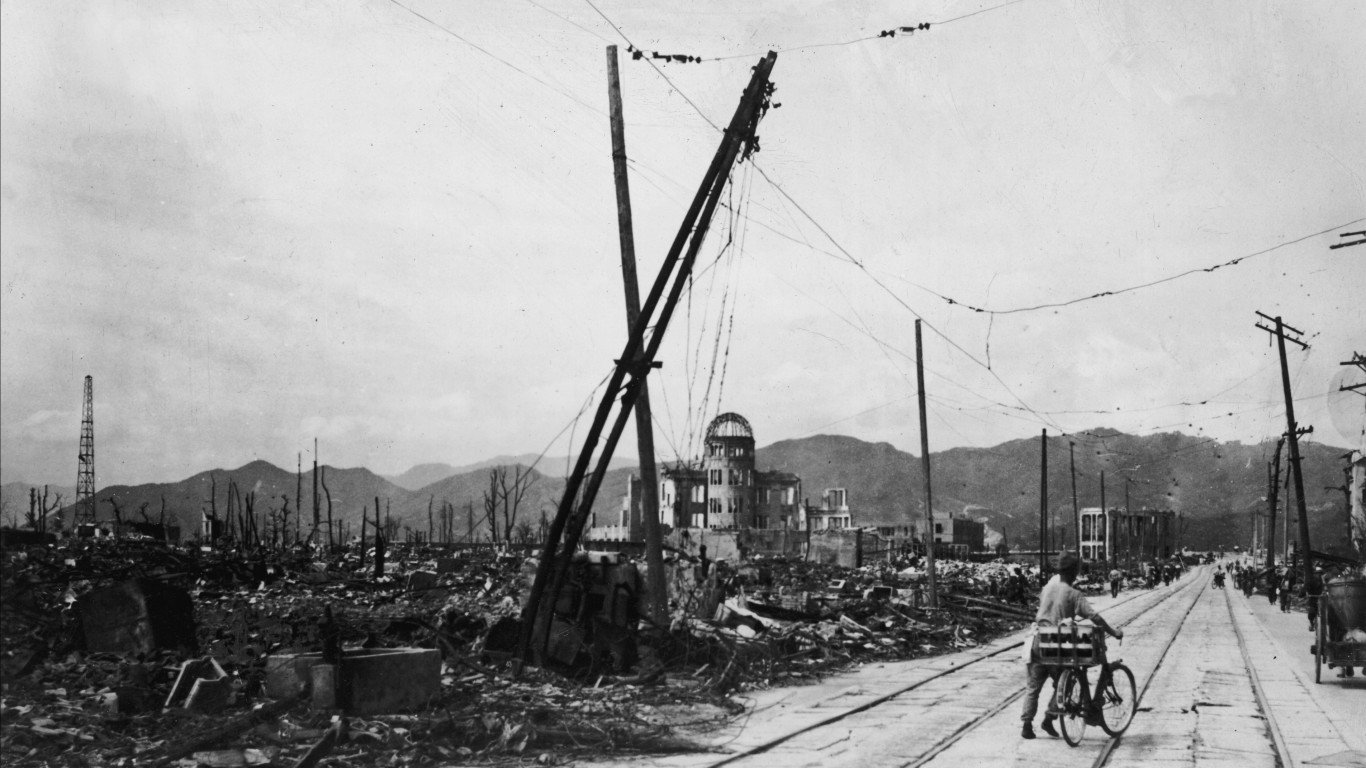 24/7 Wall St.
24/7 Wall St.
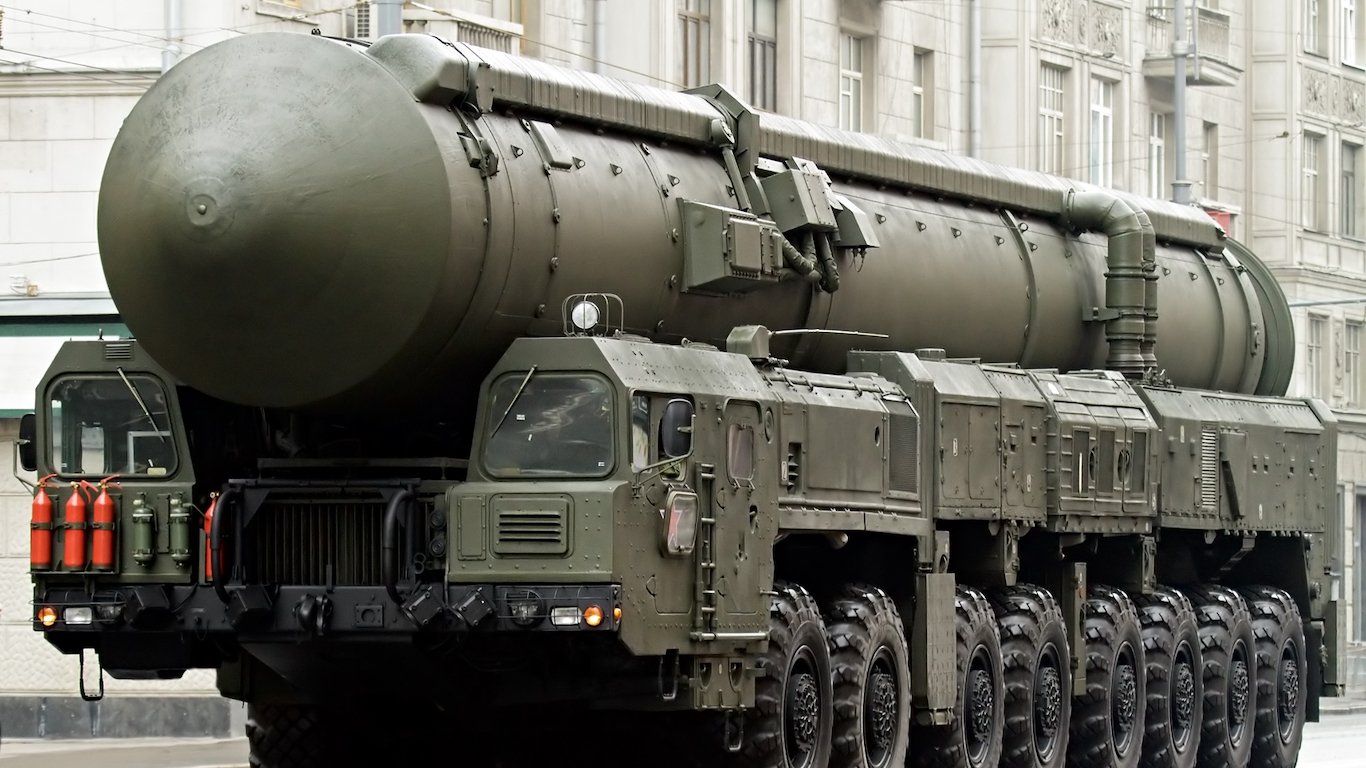 24/7 Wall St.
24/7 Wall St.


